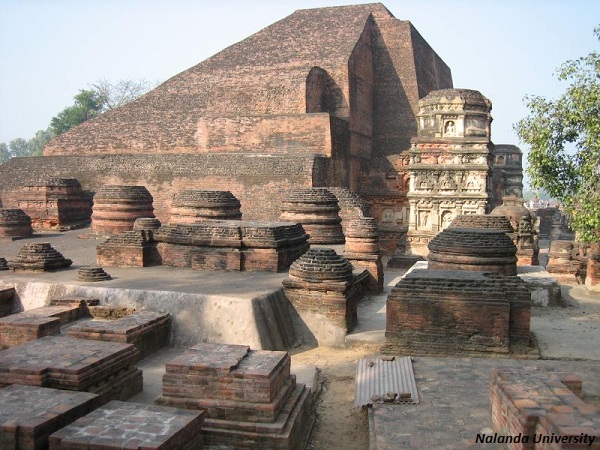
- Ancient Indian History - Home
- Study of Indian History
- Writing of Ancient Indian History
- Imperialist Historiography
- Historiography Nationalist Approach
- Marxist School of History
- Sources of Ancient Indian History
- Archaeological Sources
- Geographical Background
- Geography in Ancient Literature
- Stone Age Cultures
- Mesolithic Culture
- The Neolithic Age
- Chalcolithic Period of India
- Chalcolithic Culture In India
- Harappan Civilization
- Harappan Town Planning
- Harappan Crafts & Industries
- Harappan Culture
- Harappan Religion
- Harappan Chronology
- Vedic Civilization
- Vedic Society
- Vedic Politics
- Vedic Religion & Philosophy
- The Aryan Invasion
- Later Vedic Age
- Social System after Vedic Age
- Achievements of Indian Philosophy
- Evolution of Jainism
- Evolution of Buddhism
- Alexander’s Campaign in India
- Maurya Dynasty
- Kalinga War & its Impact
- Society & Economy during Mauryas
- Mauryan Governance
- Early History of South India
- Age of Smaller Dynasties
- Literature of Satavahana Period
- Society of Satavahana Period
- Economy of Satavahana Period
- Technology of Satavahana Period
- Chola Dynasty
- Pandya Dynasty
- Chera Dynasty
- Period of Foreign Invaders
- Gupta Period
- Decline of Guptas
- Governance of Gupta Period
- Literature of Gupta Period
- Economy in Gupta Period
- Science & Tech of Gupta Period
- India after the Gupta Period
- Period of Harsha
- South India during the Harsha Period
- Kadamba Dynasty
- History of Kamarupa
- India after Harsha
- Gurjara Pratiharas
- Palas of Bengal
- Rashtrakutas of Deccan
- Literature after the Harsha Period
- Society after the Harsha Period
- Economy after the Harsha Period
- Religion after the Harsha Period
- References & Disclaimer
Ancient Indian History - Palas of Bengal
After the death of Harsha and up to the rise of the Palas, the history of Bengal is not clear.
During this time, West Bengal was known as Gauda and East Bengal as Vanga.
Bengal was subject to internal disorder, which has been termed as Matsyanyaya.
Rulers of Pala Dynasty
Gopala was the elected king by the people in a revolution to end the Matsyanyaya.
The history of Gopalas early life is not known.
Gopala introduced peace in the kingdom and laid the foundation for the Pala dynasty.
Dharmapala became ruler after Gopala in about A.D. 780. He undertakes the expansion of his empire.
Dharmapala defeated Indrayudha, the king of Kanauj and installed his nominee Chakrayudha to the throne of Kanauj.
Dharmapala held a grand darbar at Kanauj, which was attended by several kings. However, he could not consolidate his position.
Rashtrakuta king, Dhruva defeated Dharmapala near Monghyr (Bihar) in a battle.
Meanwhile Nagabhatta II, Pratihara king became more powerful.
After Dharmapala, his son Devapala became the ruler. He was the mightiest Pala king. He conquered Pragjotishpur (Assam) and Utkala (Orissa).
The kings Palas dynasty ruled over Bihar, Bengal, and parts of Orissa and Assam with many ups and downs for over four centuries.
Arab merchant Sulaiman testifies their power. He calls the Pala kingdom Ruhma (or Dharma), short for Dharmapala,
Sulaiman mentioned that the Pala rulers were at war with their neighbors the Pratiharas and the Rashtrakutas, but his troops were more in number than his adversaries.
Sulaiman also mentioned that it was usual for the Pala king to be accompanied by a force of 50,000 elephants.
The Tibetan chronicles also provide detailed information about the Palas dynasties.
According to Tibetan historians, Pala rulers were great patrons of Buddhist learning and religion.
Dharmapala founded the famous Buddhist monastery at Vikramashila. It became eminent as Nalanda (in fame).
During Pala reign, Nalanda University became famous all over the world.

During this period, Nalanda had more than 10,000 students and teachers coming not only from different parts of India, but also from central Asia, China, South East Asia, and Sri Lanka.
Nalanda University was considered as one of the biggest educational institutions of its time.
It imparted education in various branches of knowledge.
Dharmapala donated the royal income from two hundred surrounding villages to meet the expenses of Nalanda University.
Devapala also donated income from five villages.
The king of Suvarnadvipa (modern Malaya Peninsula, Java and Sumatra), Maharaja Balaputradeva erected a monastery in Nalanda and requested Devapala to donate five villages for the maintenance of that monastery.
The Pala kings patronized Hinduism as well.
Vinayakapala built one thousand temples in honor of the Lord Saiva. They also gave donations to Brahmans to settle in their country and run gurukuls.
The powerful Sailendra dynasty of South East Asia sent many embassies to the Pala kings. They ruled over Malaya, Java, Sumatra, and neighboring islands.
The Palas had close trade contacts and cultural links with South East Asia and China.
The trade with South East Asia and China was very profitable and added greatly to the prosperity of the Pala Empire.